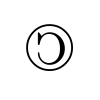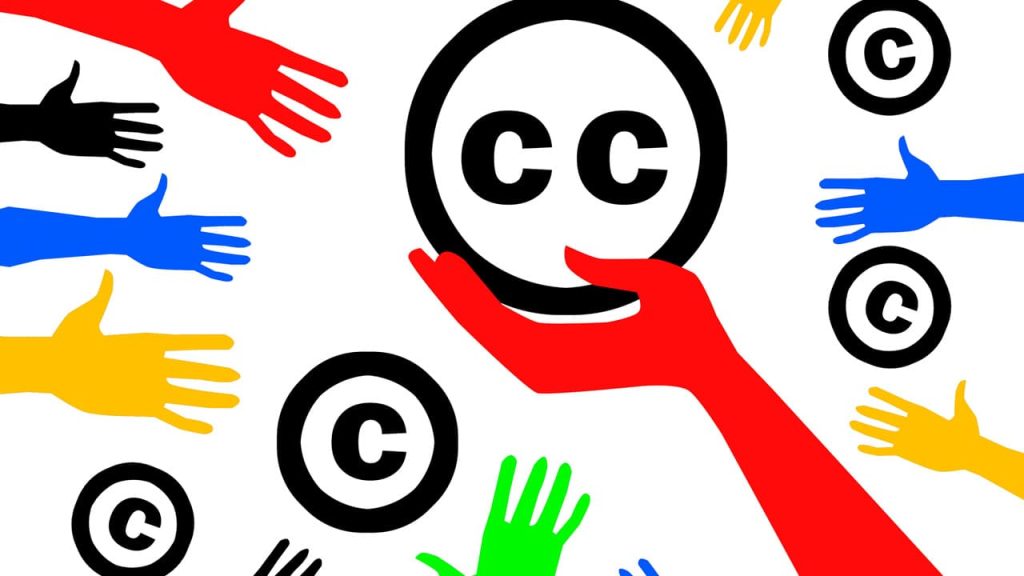
What is copyleft and examples
Copyleft encompasses the types of licenses with which an author releases some of his or her rights, such, for example, as the right to make copies of the work, for profit or not-for-profit.
It is a legal practice that allows the free distribution of copies and modified versions of a work, claiming that the rights are respected in the different versions. Copyleft licenses can be used for computer programs, science, culture, works of art and, in short, for any creative work governed by copyright.
Below, we explain the origin of this term, the types of copyleft that exist, what it is used for and some examples.
What is copyleft?
The term copyleft was coined by computer programmer Richard Stallman, founder of the GNU General Public License Project, a complete free software operating system. It comes from a play on the words “right” and “left”, which mean “right” and “left”, and refer to the opposing concepts.
The word “copyleft” translated from English as “copy left” is opposed to the term “copyright”, translated as “copyright” or, literally, “right to copy”, thus indicating that redistribution of the work is allowed, with or without changes. It is even represented graphically with an inverse symbol to that of copyright and in brackets.

The copyleft license arose in the world of programming with the aim of protecting the free circulation of computer code and the knowledge it contains. Thus, those who own the proprietary rights to a work can share it under a free license.
Types of copyleft
There are 4 types of copyleft licenses:
Strong copyleft
It is known as strong copyleft when the derivative work (work or program adapted or modified in any way giving rise to a different one) of a software cannot be linked by non-free programs.
The goal is not to give proprietary (nonfree) software developers an advantage, since they could be used to create programs that take away users’ freedom. In practice, it means that a computer programmer who develops a proprietary program cannot use the code of a free program.
Weak copyleft
It is called weak copyleft when the derivative work of a program can be linked to by non-free programs. In this case, the objective is to facilitate the adoption of free source programs, provided that there are free proprietary alternatives of the same program. In other words, in this case, proprietary programs could use the code of the free program.
Full copyleft
The purpose of full copyleft is to ensure that derivative works of a program are distributed under the same conditions as the original program. In this way, it prevents the creation of a proprietary program from a free one.
Partial copyleft
Partial copyleft allows a derivative work of a program to distribute the edited part under the same conditions as the original work. The rest of the program can be distributed as the author sees fit.

How is copyleft used and what is it for?
Copyleft serves to disseminate knowledge and eliminate barriers in the world of computing, science, culture, works of art and, in short, any creative work that is governed by copyright.
Thanks to copyleft, these rights are guaranteed, as we have seen in the previous point, through different types of commercial licenses (strong, weak, full and partial copyleft).
Now, how is copyleft used? The process is quite simple. Let’s look at the steps from the creation of the work:
- The creator of the original program acquires the copyright by the fact of having created the work. In these cases, it is recommended to formally register the creation in order to generate evidence of the declaration of authorship. This can be done easily and online from this page.
- This copyrighted work can go with or without copyleft, it is up to you to decide. However, if it is distributed with copyleft license, the work will always remain under it. In the case of computer science, it is important to emphasize that there are free software licenses with and without copyleft.
Why do many people choose to use this license? It is a particularly important decision because copyleft:
- It enriches the community (computing, scientific and artistic) with a contribution of knowledge. In addition, other computer scientists will be able to use the free code of that software and make any modification, contributing more information to the community.
- Not only does the professional sector benefit, but thanks to the use of copyleft licenses, users have the freedom to use free software (or any other type of work).
Examples of Copyleft
Some examples of copyleft are the GNU General Public License, mentioned above, and the Creative Commons licensing system.
On the one hand, the GNU General Public License was precisely the one that gave rise to the term copyleft in the eighties, after a conflict over the rights to a complete free software operating system. So if a computer scientist uses, modifies or improves a free code program, since it carries a copyleft license, he cannot limit access to the new version to the users.
On the other hand, there is the case of the Creative Commons, an American non-profit association that promotes universal access to knowledge and culture. This organization has developed a set of free legal instruments to encourage creativity, innovation and collaboration.

Fulfilling its mission, it provides commercial licenses and public domain tools that allow the author to decide the protection he/she wants to give to the information. The Creative Commons system is widely used, for example, in the case of ebooks, multimedia files or any creative and educational work. Whatever the type of license chosen, it is necessary to mention the author of the work.
